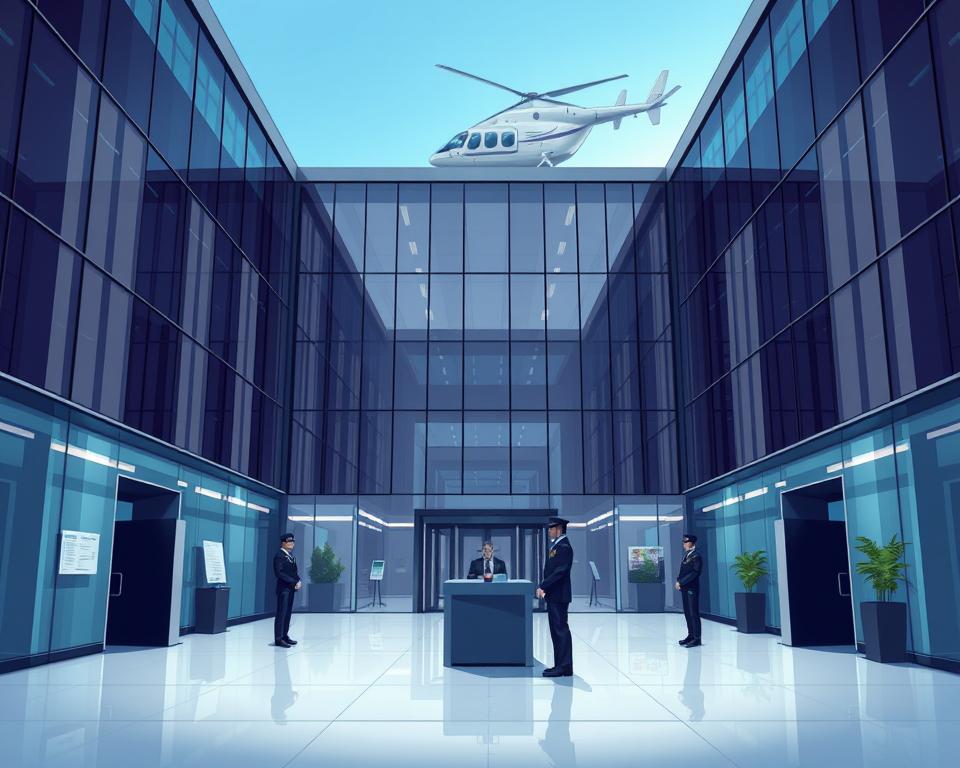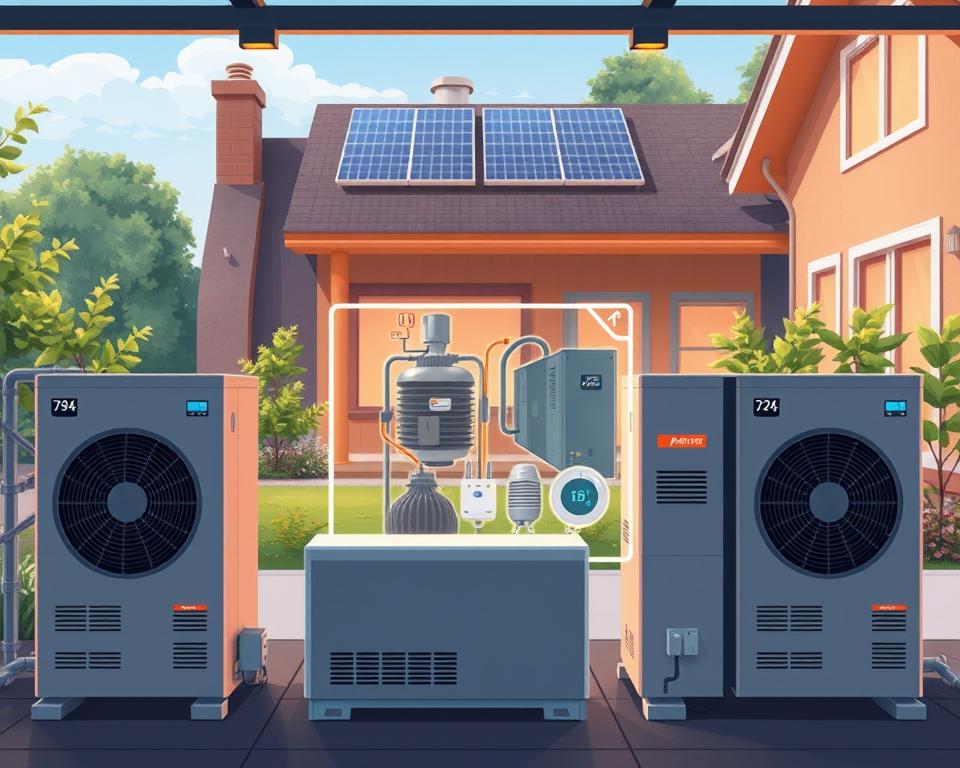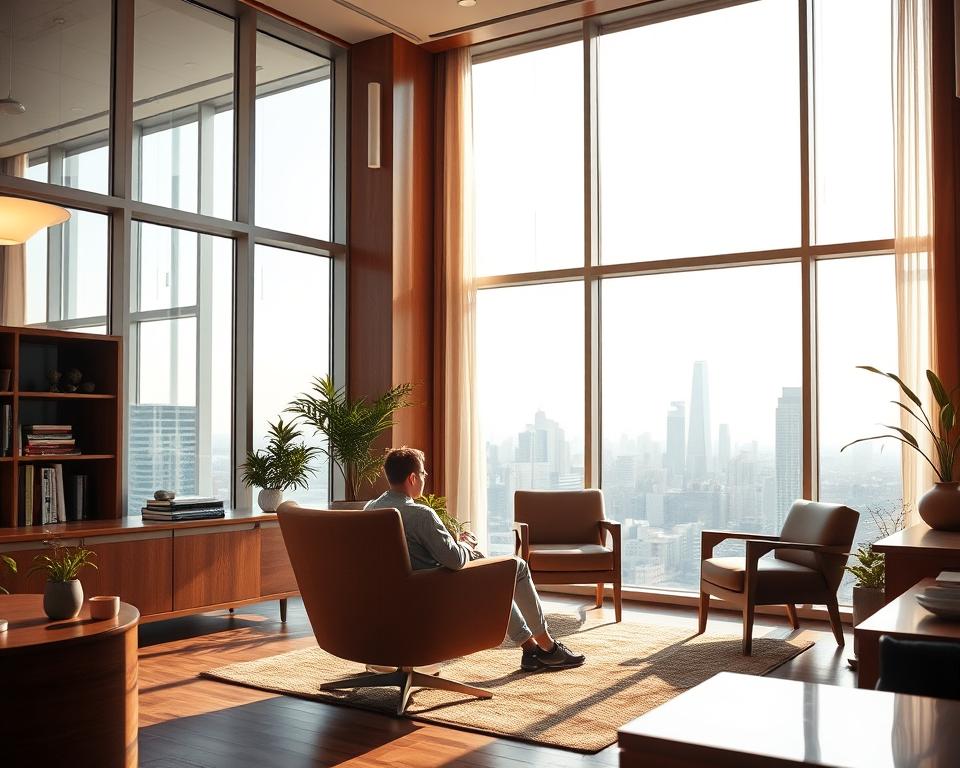Protect Your Own Valuable Items using Business Safeguarding
Visualize an environment where all doors, server rooms, and data points remain guarded against risks. For contemporary businesses, defending both physical locations and digital frameworks isn’t a choice—it’s a necessity for staying alive. Why do 68% of companies report gaps in their safety protocols despite increased investments? The answer lies in choosing partners who deliver more than promises.
Divine Protection Services sets itself apart by merging state-of-the-art construction site security monitoring with real-world human proficiency. Their strategy goes beyond locking doors—it forecasts threats before they intensify. From storefronts to campuses, customers receive bespoke protection plans that evolve as challenges change.
Dependable security extends past cameras and sirens. It necessitates on-the-spot response squads skilled in tackling emergencies, as well as cyber safeguards for crucial data. Such a dual approach guarantees the safety of staff and resources, fostering settings where growth flourishes.
With a 97% client retention rate, the results speak louder than claims. A hospital system saw theft drop by 83% in just six months of partnership. Another tech firm prevented a major data breach through proactive threat detection. Peace of mind isn’t a luxury—it’s what happens when preparation meets execution.

Ready to transform how you defend your most valuable resources? Let’s delve into what real security readiness means.
Why Choose Divine Protection Services for Your Business Security
Effective protection strategies blend technology with human insight for maximum impact. While providers like ADT offer standardized packages, Divine Protection Services crafts plans that evolve with your unique operational needs. Their comprehensive strategy covers gaps that other providers frequently ignore.
Trusted Expertise Nationwide
Leveraging 15 years in the field, their staff manages issues from shoplifting to corporate spying. Unlike Securitas Technology’s template-based systems, they deploy:
- Intelligent entry management that adjusts to foot traffic
- AI-powered camera systems that assess conduct, beyond mere motion
- Cybersecurity integrations for hybrid environments
Customized for Your Business Processes
A local hospital achieved a 74% decrease in drug diversion with their phased rollout approach. Their engineers first analyzed foot traffic patterns, then installed biometric access points in high-risk areas. This accuracy stands in stark contrast to generic “security solutions” that treat warehouses and tech firms the same.
“They don’t just sell equipment—they build relationships,” observes a Fortune 500 security director. Real-time monitoring teams work in sync with your staff, creating layers of defense that static systems can’t match. Whether upgrading existing infrastructure or starting fresh, their plans grow as your needs change.
An Outline of Holistic Security Offerings
Today’s organizations need defenses that evolve faster than emerging risks. Divine Protection Services delivers tailored solutions combining real-time monitoring, AI-powered analytics, and seamless system integration. Their methodology integrates separate tools into a single defense layer for both physical and cyber risks.
Advanced technology serves as the foundation of these tactics. Cloud-based management platforms let teams oversee access controls, video feeds, and sensor networks from one dashboard. “Tomorrow’s success comes from tech that forecasts problems before alarms sound,” says a Cybersecurity Lead at TechCrunch.
Essential elements encompass:
- Intelligent video processing flagging odd conduct trends
- Secured data repositories adhering to rigorous regulatory benchmarks
- Automatic incident documentation that shortens response windows
By merging hardware like 4K cameras with machine-learning software, vulnerabilities shrink. With this layered tactic, a Midwest distribution center cut warehouse break-ins by 91%. The outcome? Workflows remain seamless, and resources stay secure without endless manual oversight.
Such flexible solutions expand with evolving demands—whether opening new sites or enhancing current systems. Backed by round-the-clock assistance and periodic technology upgrades, customers shield their investments for the future while retaining strong risk oversight.
Understanding Business Security Needs for Modern Companies
No two enterprises face identical weak points. A city-based legal office encounters different threats than a rural storage facility or a health clinic. Hence, generic solutions frequently overlook concealed blind spots. Successful tactics begin by charting exactly what your processes need.
Assessing Risk and Vulnerability
Premier firms like Divine Protection Services start by creating 3D models of physical premises and digital infrastructures. They assess doorways, data pathways, and employee movements. A car parts maker realized that 62% of after-hours operations happened in unsupervised storage spots—a blind spot old-school setups missed.
Essential assessment techniques encompass:
- Infrared sweeps revealing uncovered zones in camera reach
- Simulated breach tests to expose response weaknesses
- Employee habit tracking revealing accidental security lapses
Identification devices are crucial in this stage. High-tech detectors signal abnormal activity around restricted zones before events unfold. A Midwest hospital used heat-mapping technology to reduce unauthorized access to medication storage by 89%.
Customized offerings adjust to sector-specific issues. Retail businesses could target inventory shrinkage algorithms, while tech enterprises zero in on secure entry protocols. As one risk analyst notes: “Protection isn’t about barriers—it’s about smart filters that let the right people in and keep threats out.”
Advanced Video Surveillance and Alarm Systems
Contemporary monitoring devices do more than observe—they forecast and avert. Premier firms like ADT and Securitas Technology use platforms that scrutinize actions while countering dangers immediately. These solutions form intelligent perimeters, blending sharp observation with instant response.
Instant Camera Monitoring Innovations
4K cameras now capture sharper images than ever, even in dim conditions. ML-driven analytics review footage for odd motions, such as someone loitering near off-limits areas. Principal functions encompass:
- 4K resolution with 360-degree coverage for parking lots and stockrooms
- Online storage maintaining recordings for more than 90 days
- Real-time phone alerts triggered by glass break sensors
One retail brand saw a 41% drop in shoplifting thanks to motion-detecting cameras that trail suspects on their own. This tech helps teams act before incidents escalate.
Next-Generation Alarm and Detection Solutions
Smart alarms now talk to other devices. As a window sensor activates, nearby cameras zoom and doors lock. According to Securitas, reaction times decrease by 58% with such integration.
Modern vibration sensors detect tampering efforts on vaults or rack systems. Heat cameras also catch temperature surges from overworked machinery. These layers work together like a digital nervous system—quietly vigilant until action’s needed.
“It’s beyond simply louder sirens,” says an ADT engineer. “It’s insightful signals that locate the real problem zones.” From warehouses to offices, these systems adapt to protect what matters most.
Next-Generation Access Control Technologies
A proper key shouldn’t merely open doors—it must verify who’s using it. Contemporary access platforms function as smart gatekeepers, authenticating identities prior to granting access. Vendors such as ADT now employ mobile credentials and fingerprint biometrics rather than cloneable keycards.
Advanced systems combine biometric authentication with real-time camera feeds. Facial recognition software cross-checks visitors against approved lists while 4K cameras document every entry attempt. This two-tier tactic discourages unauthorized entry preemptively.
For instance, a Boston healthcare facility cut after-dark break-ins by 76%. They set up palm-vein authentication at pharmacy ingress points and tied cameras to movement sensors. Employees enjoyed seamless entry, whereas outsiders caused immediate alerts.
Modern capabilities fuse physical defenses with digital safeguards flawlessly. Cloud-based dashboards let managers adjust permissions remotely, revoking access during off-hours. Connected alarms seal off sections when sensors spot break-in attempts.
“Accuracy is crucial now more than ever,” remarks an ADT field technician. Personalized controls secure sensitive spaces without interrupting processes. From laboratories to executive suites, intelligent platforms allow only approved personnel free movement—safeguarding teams and resources.
Anticipatory Intrusion Detection with Continuous Oversight
Threats don’t clock out at 5 PM—they strike when defenses dip. Divine Protection Services employs ML-driven detectors that learn routine behaviors throughout your premises. Unlike standard systems from ADT or Securitas Technology, these tools predict irregularities before they escalate, ensuring threats get neutralized fast.
Constant Monitoring, Speedier Responses
Nonstop oversight reduces response intervals during urgent events. When detectors pick up odd movement around off-limit areas, notifications are sent directly to your staff and expert responders. A distribution center reduced issue resolution from 22 minutes down to 3.7 minutes with this approach.
Key features include:
- Machine-learning models that adjust to evolving intrusion methods
- Heat-sensitive sensors that detect thermal anomalies in pitch-black zones
- Automated lockdown protocols triggering during breaches
Real-time dashboards show live feeds and threat levels, letting managers act decisively. A retail client reduced after-hours break-ins by 67% within four months. As their operations director noted: “The system doesn’t just watch—it thinks three steps ahead.”
Continuous monitoring fosters confidence among clients and staff alike. Whether managing late-night alerts or holiday vulnerabilities, uninterrupted coverage stabilizes operations. With risks evolving daily, proactive protection isn’t optional—it’s how modern organizations stay ahead.
Fusion of State-of-the-Art Security Innovations
Contemporary protection isn’t solely about locks—it’s about intelligent integrations. Leading platforms like Securitas Technology’s secureStat® HQ™ merge sensors, cameras, and analytics into one responsive system. This merger converts discrete tools into a cohesive defense that adapts to dangers on the fly.
4K cameras combined with AI-based video analytics detect odd behaviors quicker than human operators. For instance, shops today deploy motion sensing to highlight loitering in high-theft zones. The technology sends alerts before incidents escalate, letting staff intervene proactively.
Contemporary deployments unite resilient hardware with web-based analytics. Access control panels sync with mobile apps, allowing remote permission updates. A hospital in the Midwest lowered unauthorized infiltration by 79% through palm-vein scanners integrated with infrared detectors.
These connected systems deliver instant insights through dashboards. Supervisors monitor live video, danger indices, and mitigation steps in a single interface. “Integration lets us act on patterns, not just alarms,” notes a Securitas engineer. From fire detection to data protection, seamless coordination meets evolving needs while keeping operations smooth.
Boosting Protection Through Unified Security Platforms
Combined security infrastructures operate like a digital nerve network—tying each safeguard layer to respond in unison. When surveillance, alerts, and entry modules collaborate, they build contexts where dangers are identified quicker and addressed more wisely. Providers like ADT and Securitas Technology now offer platforms where sensors trigger automated defenses, reducing human error.
Intelligent Tools in Protection Platforms
Modern setups merge surveillance tools with real-time analytics to predict issues before they escalate. As an example, ADT’s Command interface pairs 4K cameras with motion-detecting alarms. When a sensor detects unusual activity, nearby cameras zoom in while doors lock automatically. This seamless coordination cuts response times by up to 65% compared to standalone devices.
Linked devices likewise evolve by observing daily routines. AI cameras review movement patterns, indicating loitering around off-limits sections. Thermal sensors in warehouses detect heat spikes from equipment malfunctions. “Unified systems transform raw inputs into actionable intelligence,” notes a Securitas engineer. One distribution center cut break-ins by 78% through these layered protection measures.
Ongoing analytics enhance operations as time goes on. Networks log which entrances encounter repeated breaches or which periods exhibit highest vulnerabilities. These insights enable staff to tweak procedures, ensuring security evolves as risks change. With everything working in sync, organizations gain peace of mind knowing their safety net grows stronger daily.
Tailored Security Solutions for Diverse Industries
Every industry faces unique threats that demand specialized defenses. A medical center’s demands diverge significantly from a retail outlet’s, in the same way a tech startup’s hazards contrast with a depot’s. Off-the-shelf solutions frequently have holes—Divine Protection Services fills them with strategies based on industry-specific circumstances.
Addressing Industry-Specific Challenges
Hospitals emphasize patient protection and drug control, while retail chains fight systematic theft. One regional hospital slashed drug diversion by 74% using biometric scanners in high-risk zones. Meanwhile, a retail chain reduced shoplifting by 41% through AI cameras tracking suspicious movements.
Key measures vary by sector:
- Secure data encryption standards for banks
- Infrared sensors in production facilities to catch equipment overheats
- Workstation panic triggers for office campuses
Developing Custom Security Strategies
Divine Protection Services starts with deep-dive audits of physical layouts and digital workflows. They diagram entryways, personnel routines, and data traffic flows. For one logistics firm, this uncovered that 62% of unauthorized actions took place near shipping bays—now watched by 360° cameras.
“They asked questions others didn’t,” comments a clinic director. Strategies combine innovations such as intelligent entry systems with team training modules. Live dashboards enable supervisors to tweak procedures as risks shift, keeping defenses ahead of dangers.
Effortless Setup and Swift Reaction Features
A smooth setup process paired with rapid aid ensures uninterrupted operations. Premier firms like ADT focus on same-day installs, implementing alarm systems without halting workflows. Their accredited crews come ready, frequently finishing setups in less than four hours.
Fast installation relies on precise planning. Technicians survey sites beforehand, mapping wiring paths and device placements. This groundwork allows them to:
- Install sensors during off-peak hours
- Integrate new devices into current systems
- Test all components before finalizing
ADT guarantees 24/7 monitoring teams respond to alerts within 30 seconds—day or night. “Every moment matters in crises,” observes their operations chief. When a New York retailer faced a break-in, authorities arrived in 3.7 minutes thanks to instant alerts routed to local patrols.
Proactive maintenance keeps systems reliable long-term. Suppliers furnish next-day service windows for pressing problems, limiting downtime. With optimized installations and swift aid, enterprises uphold uninterrupted security while concentrating on scaling.
Continuous Security Oversight and Upkeep
Dependable security doesn’t stop at deployment—it flourishes with ongoing attention. Divine Protection Services ensures your defenses stay sharp with proactive updates and 24/7 oversight. Unlike ADT’s baseline upkeep offerings, their staff integrates predictive insights from SecureStat® HQ™ with in-person audits.
Specialized Help and Upkeep
Round-the-clock monitoring teams resolve issues before they disrupt operations. Certified technicians perform monthly system checks, updating software and testing backup protocols. One retail collaborator noted a 94% improvement in threat response after starting their upkeep plan.
Key features include:
- Automatic device updates for cameras and sensors
- Combined fire alarm checks in non-peak periods
- Observation audits verifying ideal camera positioning
Assigned account managers deliver priority assistance through phone or application. “They corrected a sensor error remotely as we slept,” shares a healthcare client. Preventive actions like adjusting motion detectors reduced false positives by 73% in a warehouse.
Through real-time dashboards monitoring system wellness, leaders identify trends like battery lows or signal losses. This vigilance reduces theft risks and keeps every layer performing at peak capacity—because true safety never takes a day off.
Enhancing Company Efficiency Through Strong Protection
Robust safeguarding steps do more than avoid damage—they spur development. When personnel feel secure, output increases. A factory recorded an 18% productivity boost after enhancing safety measures. “Performance metrics” play a key role here, identifying bottlenecks in workflows while tightening safeguards.
Staff flourish in workplaces where threats stay contained. Retailers using smart sensors report 32% fewer disruptions during peak hours. This reliability enables employees to prioritize customer service instead of worrying about gaps. A Midwest distributor reduced equipment downtime by 41% through predictive maintenance alerts tied to their monitoring systems.
Long-term benefits compound over years. Users of combined solutions enjoy 23% faster choices enabled by live dashboards. “Our standing rose when customers observed our enhanced security measures,” comments a tech organization director. Customer trust grows when operations run smoothly without visible security hassles.
By matching security steps to strategic aims, corporations develop resilience that produces rewards. The outcome? More content staff, faithful customers, and enduring success that withstands shifting threats.
Ultimate Business Security Approach
What differentiates basic safeguarding from exceptional protection? Flawless integration across all layers. Contemporary tactics succeed when control modules, monitoring devices, and action plans operate in harmony. ADT’s Command platform and Securitas Technology’s secureStat® HQ™ exemplify this integration—transforming isolated devices into intelligent ecosystems.
End-to-End Command and Network Unification
Imagine door sensors triggering cameras to focus on entry points while alarms notify responders. This real-time collaboration shrinks vulnerabilities faster than standalone tools. Consolidated consoles allow staff to oversee interior cameras, exterior motion sensors, and entry logs all from one interface.
Key benefits include:
- Self-driven processes cutting manual inspections by 58%
- Cross-device alerts prioritizing urgent threats
- Centralized updates ensuring all components stay current
One warehouse merged perimeter lasers with indoor thermal sensors, cutting unauthorized entries by 91%. “Integration isn’t optional—it’s how modern risks get neutralized,” observes a Securitas technician. Forward-looking management solutions likewise forecast upkeep requirements, such as declining sensor power.
By blending indoor air quality monitors with outdoor license plate readers, organizations create 360-degree safety nets. This all-encompassing method offers clarity in complexity—enabling teams to concentrate on growth rather than speculation.
Closing Remarks on Enhancing Your Protection Protocols
Safeguarding your chief assets needs more than locks and cameras—it calls for foresight. By blending smart detection tools with 24/7 human expertise, organizations create shields that adapt faster than threats evolve. From fire alarms tied to sprinkler networks to AI-fueled surveillance, layered tactics secure people and assets 24/7.
Divine Protection Services stands out by crafting defenses tailored to your unique needs. Their unified method merges intrusion detectors, entry systems, and live notifications into a single adaptive network. Customers experience 74% fewer incidents following rollout, confirming that tailored approaches surpass off-the-shelf arrangements.
Such platforms don’t merely fix present issues—they foresee future threats. Cloud-based updates ensure cameras and alarms stay ahead of emerging tactics. One store partner witnessed a 67% theft decrease alongside bolstered customer trust via evident protections.
Each dollar put into strong protection yields returns in team morale and smooth operations. “Reliable service lets us focus on growth, not gaps.” As ADT patrons mention: From protecting office areas to distant locations, a forward-thinking approach turns weaknesses into advantages.
Prepared to forge a more protected future? Team up with specialists who cherish your confidence as much as their tools. Since when safeguards adapt to your demands, each day turns into a chance, not a threat.
Questions & Answers
How does real-time video monitoring protect my company?
Real-time streams combined with AI analysis immediately flag abnormal behaviors, such as illicit entry or theft. Warnings reach both your in-house team and surveillance hubs, prompting fast countermeasures against threats.
What makes access control systems essential for modern workplaces?
These systems restrict entry to authorized personnel using smart cards, biometrics, or mobile credentials. They also track movement, helping prevent internal theft and ensuring compliance with safety protocols.
Does intrusion detection function after hours?
Indeed! Cutting-edge sensors and continuous surveillance defend your site when it’s closed. Alarms dispatch immediate alerts to response squads, curbing dangers like intrusions or fire incidents.
How do personalized security plans handle industry-centric challenges?
Shops may emphasize shoplifting deterrence, whereas warehouses concentrate on fire sensing. Tailored strategies combine surveillance, alarms, and access controls to tackle unique vulnerabilities in your sector.
Why connect fire alarms to other security systems?
Connecting smoke sensors to your core platform makes sure alerts go to in-person staff and first responders promptly. Merging cuts downtime and ensures escape paths remain open in emergencies.
What continuous maintenance keeps security systems current?
Scheduled servicing examines hardware, patches software, and confirms backups. Providers like Divine Protection Services offer expert troubleshooting to resolve issues before they impact safety.
How do intelligent cameras enhance post-incident analysis?
4K footage stamped with times eases examining theft or disagreement incidents. Capabilities like motion-activated capture reduce storage demands while ensuring essential occurrences aren’t skipped.
Are wireless security solutions dependable for big complexes?
Modern wireless tech offers stable connectivity across expansive areas. Duplicated networks and battery reserves secure ongoing performance, even if power fails.
What’s the advantage of cloud-based video storage?
Cloud solutions provide remote access to footage from any device. Secured archives shield recordings from manipulation, and auto-backups avert loss from hardware crashes.
What’s the typical arrival time for responders after an alarm?
Most providers guarantee under 5-minute dispatch times for verified threats. Collaborations with local agencies secure priority response for crises like break-ins or blazes.








